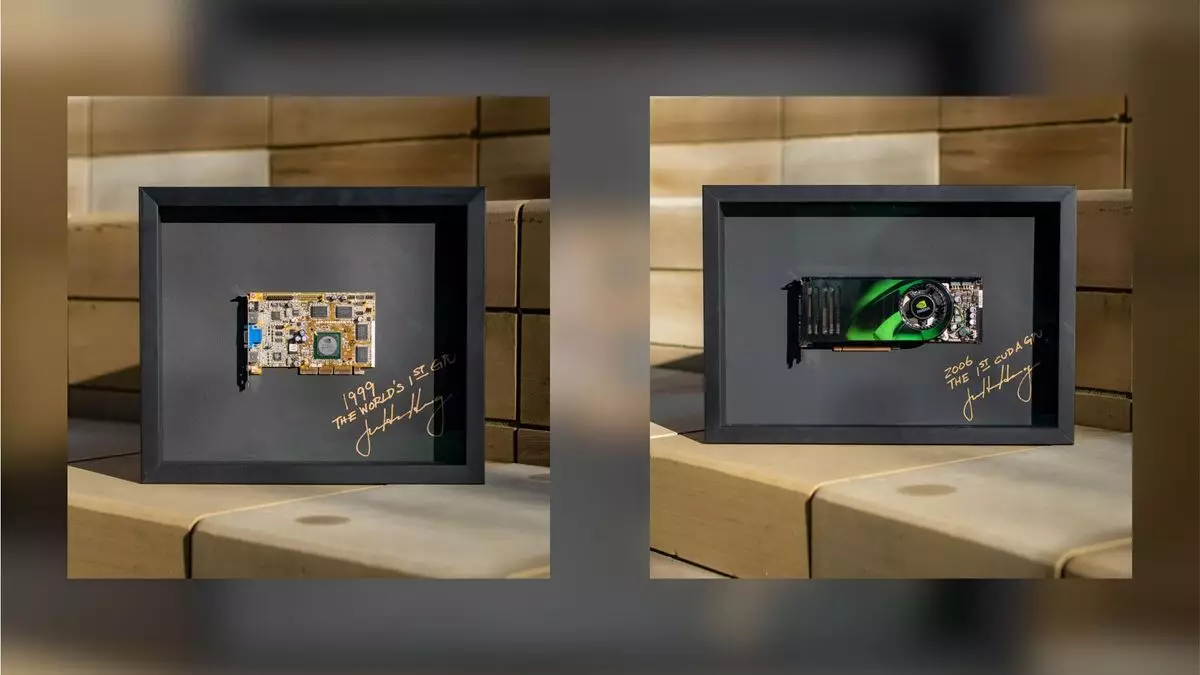Nvidia has always been at the forefront of the gaming industry, evolving alongside advanced graphics technology since its inception. The consumer electronics show (CES) serves as an ideal platform for them to showcase their latest innovations. This year’s event promises to be monumental, especially considering the nostalgia-driven approach Nvidia has undertaken by revisiting its classic graphics cards—a move that blends the past with the present.
On January 1, just before their CES briefing, Nvidia announced a unique giveaway centered around five iconic GPUs, which serves as a tribute to their historical significance in the domain of PC gaming. Kicking off this event is the GeForce 256, a card Nvidia heralds as a pioneer, being recognized as the first-ever GPU when it hit the market in 1999. This strategically planned reveal is more than just promotional fluff; it is an emotional campaign that aims to engage long-time fans while simultaneously attracting new users curious about Nvidia’s legacy.
In addition to the GeForce 256, the GeForce 8800 Ultra will also see its day in the spotlight. Known for being the first graphics processing unit to effectively unify shaders, the 8800 Ultra not only changed the gaming landscape but also marked Nvidia as a credible player for professionals working in data analysis and graphic design. The inclusion of these classic cards brings awareness to the quantum leaps in technology that have occurred since their release and invites discussions about the future while focusing on Nvidia’s undisputed position in the market.
The strategic use of social media adds another layer of intrigue to Nvidia’s campaign, as they implemented a hashtag, #GeForceGreats, which fans can use to enter the giveaway. This technique serves a dual purpose: it helps gather gaming enthusiasts around a common theme while simultaneously enhancing visibility across platforms. As the countdown to their CES presentation continues, the momentum builds, and engagement spikes, keeping Nvidia at the forefront of industry conversations.
Moreover, their Twitch initiative—streaming continuously for a series of mystery box reveals—utilizes gamification tactics to captivate viewers. It encourages community involvement, incentivizes following their social media accounts, and fosters a sense of urgency with a “total hype to date” tracker. Engaging the audience in this multifaceted manner not only generates buzz but also showcases Nvidia’s savvy in digital marketing.
With the foundation of nostalgia firmly laid, the CES briefing is anticipated to delve into the future offerings from Nvidia. Speculations mount around the unveiling of the RTX 50 series, potentially including models such as the RTX 5080 and RTX 5090. The excitement surrounding next-generation technologies could inject new life into the already electrified atmosphere at the show. It is clear that Nvidia is focused on merging past achievements with future-oriented innovation, thus appealing to a broad spectrum of consumers from casual gamers to professional users.
Ultimately, the showcase at CES is more than just an unveiling; it represents Nvidia’s ongoing journey, highlighting their resilience in the face of competition while emphasizing their commitment to innovation. Combining the celebration of their storied past with key announcements about cutting-edge technology signals a well-rounded approach appealing to both nostalgia and novelty.
Nvidia’s thoughtful combination of history and forward-thinking strategy during CES not only reinforces its dominance in the gaming space but also showcases their understanding of audience engagement in a rapidly changing technological landscape. By paying homage to their roots while making strides toward future innovations, Nvidia prepares to remain a vital player in the world of graphics technology, keeping gamers and professionals alike eagerly awaiting what comes next.

